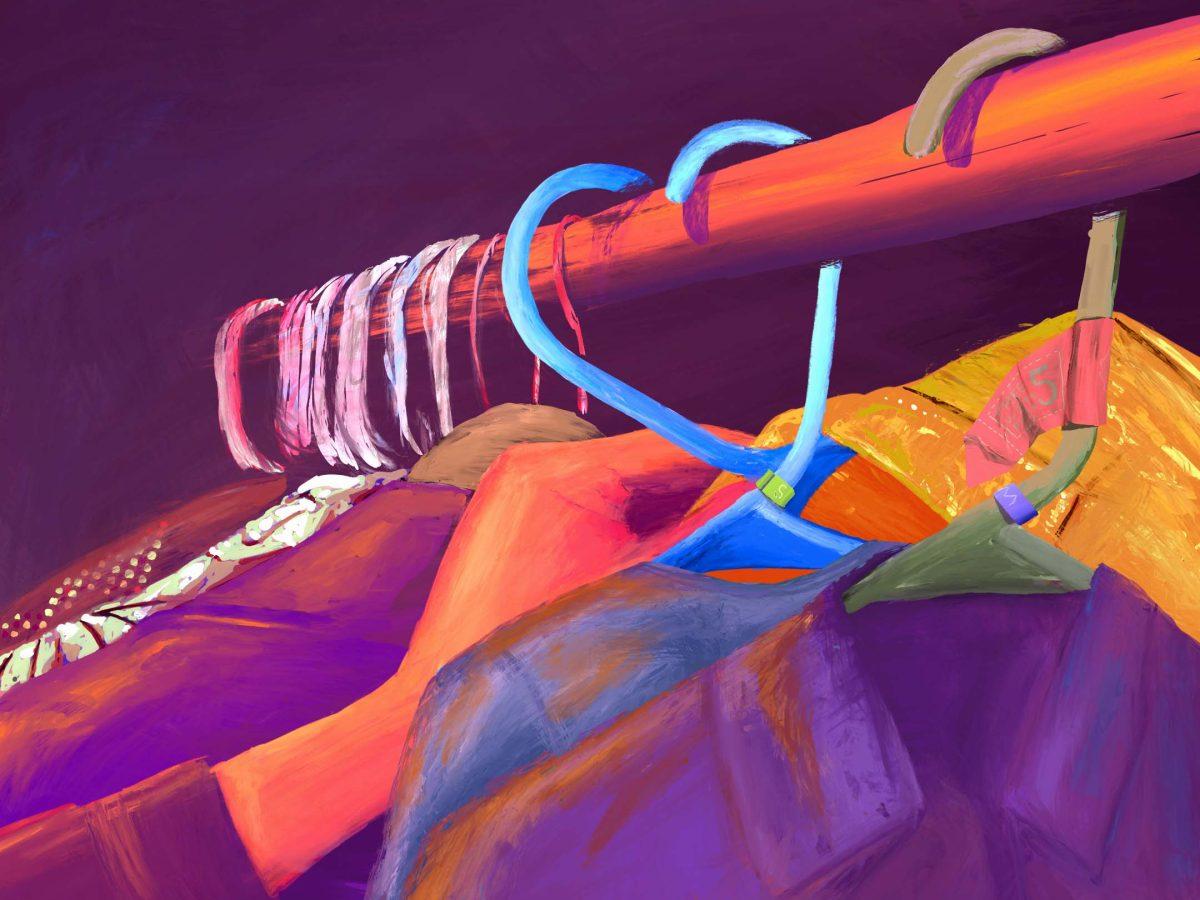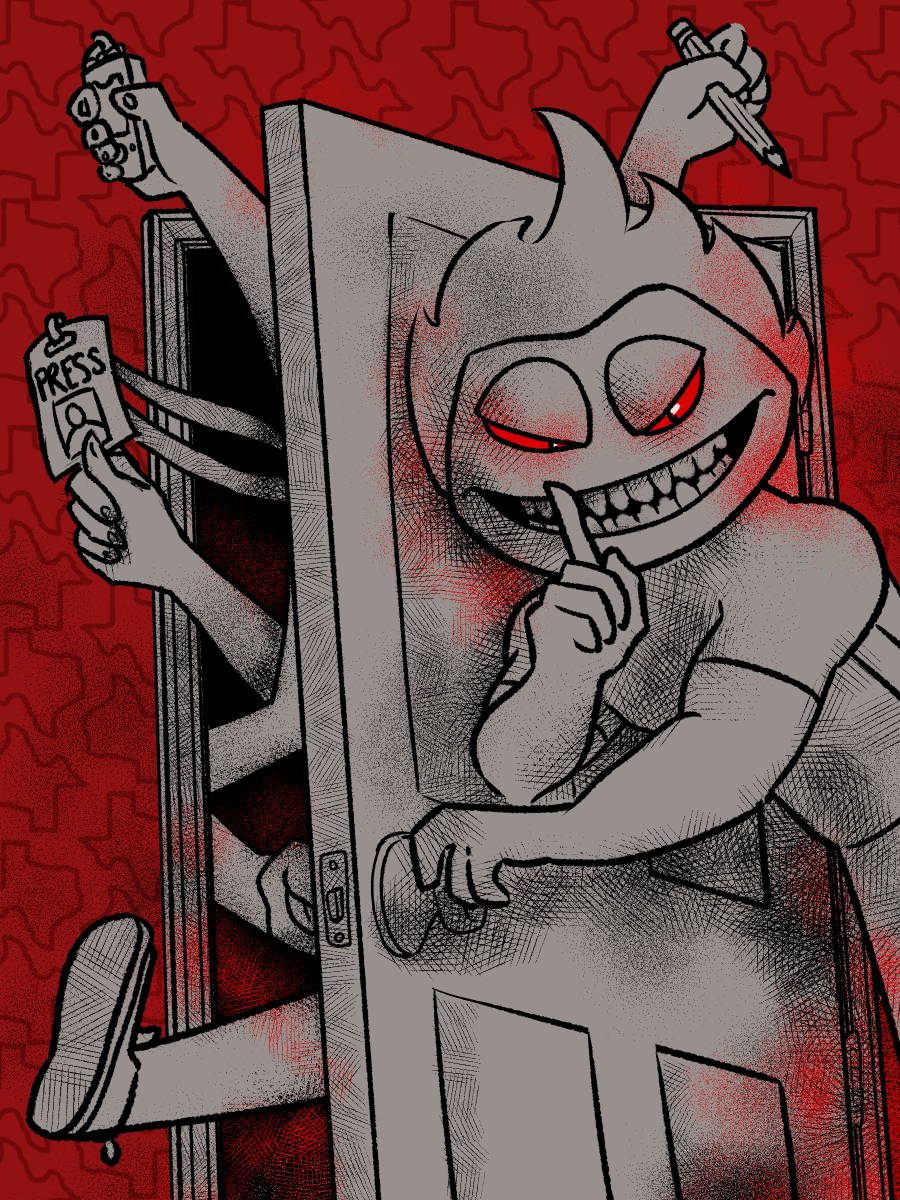While some have argued that the recent popularity of thrifting is problematic, thrifting – when done responsibly – is a more sustainable, affordable and accessible option than buying new clothes.
In addition to being a great bang-for-your-buck, thrifting has helped normalize wearing secondhand clothes. This is important because buying clothes secondhand helps lift the social stigma that hand-me-downs are ‘raggedy’ or a ‘sign of poverty.’ Thrifting has also helped college students make a living during the pandemic. Online reselling – a market that is set to grow by 69% between 2019 and 2021 – is helping students passionate about thrifting sustain themselves by making secondhand clothing just a click away to a wide online audience.
When it comes to sustainability, thrift shopping helps to reduce clothing waste by upcycling already existing clothes. Around the world, an estimated 92 million tons of textile waste is produced annually, and new clothing is responsible for about 4% of all carbon dioxide emissions. Buying clothes secondhand instead of brand new prolongs the use of a piece that might’ve otherwise been thrown out. Thrift clothes are also often better quality and more durable than similarly affordable fast-fashion brands such as H&M, GAP and Shein.
While thrifting ensures that an unsold piece won’t end up in a landfill, if you don’t end up using the clothes you purchase and throw them out, your second-hand items still contribute to clothing waste. Instead, consider reselling extra or unused clothes on online platforms such as Depop or Poshmark or donating them to charitable thrift shops and local nonprofits where your clothes can be upcycled into someone else’s closet.
As thrifting becomes more trendy, the question of whether or not thrifting is being gentrified or taking away clothes from poorer individuals has risen. Mainstream thrift stores, such as Goodwill, have changed their prices from being at a fixed rate in 2010 to a price range with maximum prices exceeding their original fixed rates in 2020. However, this is likely not a result of low supply and high demand from an influx of new thrift shoppers. Most thrift stores have a surplus of clothes; in fact, about only 20% of thrift clothes are even sold. Rising prices at mainstream thrift stores are likely a combination of inflation – which has risen by about a dollar since 2010 – and decisions made on the corporate level.
However, this doesn’t go to say that our thrifting decisions have no impact on low-income individuals. The issue of gentrification arises when thrifting in neighborhoods outside of urban and upper-suburban areas or smaller thrift stores in low-income neighborhoods. To combat this, those who aren’t low-income must choose responsibly where and what they thrift. One way to do this is to avoid buying high-need items in low stock. High-need items include good-quality professional work clothes, heavy coats for the winter, plus-sized clothing, kids’ clothing and work shoes. Due to fewer donations than upscale or city thrift stores, thrift stores in rural or lower-income suburban neighborhoods tend to have a lower stock of high-quality clothing, so avoid bulk buying clothes, especially essentials, in these areas. The limited stock of clothes in these stores is often the only source of affordable and accessible clothing for low-income individuals who live nearby. This issue can be seen in thrift stores by UTD. Uptown Cheapskate, a thrift store that isn’t as urban, is low on high-utility men’s wear, t-shirts and tank tops. Thrifting at a store in an urban or upper-suburban area instead can help ensure quality items without taking from stores that don’t have as many of them.
If you would like to give back to your local community while thrifting, opt to shop at charitable or non-profit thrift stores. Charitable thrift stores operate under a charity organization where proceeds go directly to charity while non-profits have the option to direct proceeds to charity, social welfare, civic improvements, community recreation or other causes excluding profit. Some charitable and non-profit thrift stores by UTD include Hope’s New Door Resale Store, The Resale Shop and LifeSavers Upscale Resale. As we continue to thrift, let’s remember to thrift responsibly.






